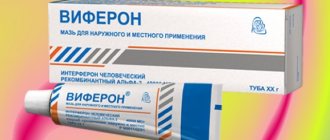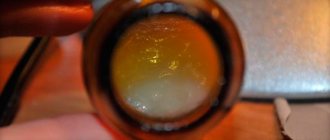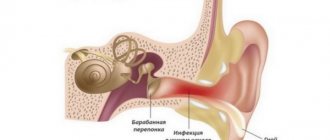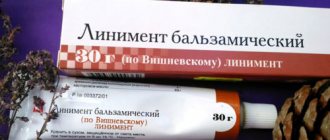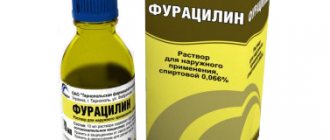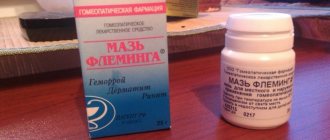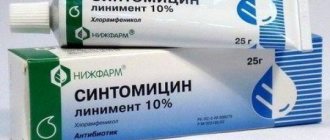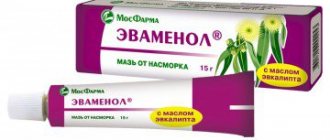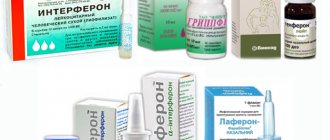Release form and description of composition
Today, many are interested in the question of what Bactroban (nasal ointment) is, instructions, price, reviews about the drug. But first you need to consider its composition and properties. As the name implies, the medicine is available in the form of a white ointment with a uniform consistency. It is packaged in aluminum tubes of 3 or 15 g. The kit also includes a plastic tip, which makes its use more convenient.
The main active substance is the antibiotic mupirocin. Naturally, there are also some excipients, including soft white paraffin, macrogol and softisan.
Bactroban ointment composition
| Components | Content, mg/g |
| Active Ingredient | |
| Mupirocin calcium* | 21,5 |
| Excipients | |
| White soft paraffin | 929,6 |
| Softizan 649 | 48,9 |
* - equivalent to 20.0 mg of free mupirocin.
Description: The ointment is white or almost white.
Pharmacotherapeutic group Antibiotic for local use.
ATX code: R01AX06.
Pharmacological properties
Pharmacodynamics
Mechanism of action
Mupirocin is a local antibiotic. Mupirocin is produced by fermentation of Pseudomonas fluorescens. Mupirocin inhibits isoleucyl transfer RNA synthetase, disrupting protein synthesis in the bacterial cell.
Due to the specific mechanism of action and unique chemical structure, there is no cross-resistance of mupirocin with other antibiotics.
The use of mupirocin according to the instructions for use reduces the risk of the emergence of resistant strains of microorganisms.
When used in minimal inhibitory concentrations, mupirocin has bacteriostatic properties, and when used in higher concentrations, it has bactericidal properties. In vivo studies have shown that mupirocin is effective against Staphylococcus aureus (including methicillin-resistant strains), Staphylococcus epidermidis, beta-hemolytic strains of Streptococcus spp.
The spectrum of in vitro activity includes the following gram-positive aerobes:
- Staphylococcus aureus, including methicillin-resistant strains and beta-lactamase-producing strains;
- Staphylococcus epidermidis, including methicillin-resistant strains and beta-lactamase-producing strains;
- other coagulase-negative staphylococci, including methicillin-resistant strains;
- Streptococcus spp.
Pharmacokinetics
Suction
A small amount of mupirocin is absorbed through damaged or healthy mucosa (less than 1% of the applied dose is excreted by the kidneys in the form of monic acid).
Metabolism
The drug is intended for topical use only. If absorbed through broken skin, mupirocin is rapidly metabolized to inactive monic acid.
Removal
Mupirocin is quickly excreted from the body by the kidneys in the form of an inactive metabolite - monic acid.
What properties does the drug have?
In modern medical practice, nasal ointment “Bactroban” is very often used. Reviews from experts, as well as relevant studies, have shown that the drug has pronounced antibacterial activity. The main active component of the drug is a broad-spectrum antibiotic. It is active against staphylococci, streptococci, E. coli and some other microorganisms.
When used externally, the components of the ointment practically do not penetrate into the deep layers of the skin. Entry into the systemic bloodstream is possible only when treating large areas. Drug metabolites are excreted by the kidneys.
When is it appropriate to take the medicine?
In what cases do doctors prescribe Bactroban ointment to patients? The use of the drug is advisable for the treatment of infectious lesions of the tissues of the nasal passages, which are caused by microorganisms sensitive to the antibiotic.
On the other hand, the medicine also copes with a host of other problems. It is often used to treat impetigo, folliculitis, as well as furunculosis of the external auditory canals and auricles. "Bactroban" can be used as a prophylactic in the presence of wounds, abrasions and cuts in the nasal passages.
Indications for use
Intranasal ointment Bactroban can be prescribed for any infectious lesions of the nasal cavity caused by bacteria sensitive to this antibiotic. The main indications for use are:
- nasopharyngitis;
- purulent rhinitis;
- sinusitis – frontal sinusitis, sinusitis, ethmoiditis. Despite the fact that with such ailments the ointment is not able to penetrate deep into the sinuses, it effectively fights purulent discharge from the nostrils, which contributes to rapid positive dynamics, as well as rapid relief of nasal breathing.
On a note! Bactroban can treat almost any dermatological problem of bacterial etiology (for example, furunculosis of the auditory canals, folliculitis, impetigo).
The undeniable advantage of this drug is that its use is allowed even for small children (starting from the first month of life).
The drug "Bactroban" (nasal ointment): instructions and recommendations
You should not use this product yourself. Only a doctor can prescribe and determine the exact dose of Bactroban (nasal ointment). The instructions contain only some recommendations.
First, squeeze 30 mg of ointment (about the size of a match head) onto a plastic tip and apply to the mucous membrane of the nasal passage. The same procedure should be done with the adjacent nasal passage, after which you should tightly pinch your nose for several minutes - this will help the drug to be evenly distributed throughout the tissues. It is recommended to perform this procedure twice a day. The course of treatment lasts from three to five days. The maximum duration of use of the ointment should not exceed ten days.
After each contact with the ointment, you should wash your hands thoroughly. If the drug accidentally gets on the mucous membrane of the eye, you need to rinse it as quickly as possible using a large amount of warm water.
Instructions for use
The active component of Bactroban nasal ointment (especially for the nose) is mupirocin. This drug is classified as an antibacterial agent for topical use. If the medicine is used in accordance with the recommendations specified in the official instructions, the likelihood of the emergence of resistant strains of pathogenic bacteria is minimal. Depending on the concentration of mupirocin, the medicine can either stop the reproduction of microorganisms or cause their death.
Bactroban exhibits antimicrobial activity in relation to:
- Staphylococcus aureus.
- Staphylococcus epidermidis.
- To some types of streptococci.
- Haemophilus influenzae.
- E. coli.
It is not recommended to use the medicine without obtaining approval from a qualified healthcare professional.
Indications and contraindications
According to the instructions for use, the indication for prescribing Bactroban nasal ointment is the presence of a local infection in the nasal cavity, which was caused by pathogenic bacteria that are sensitive to muciprocin. In addition, this external drug should be used when carrying Staphylococcus aureus.
Among the contraindications, one can highlight only hypersensitivity to the components of the drug.
Side effects
Clinical studies have shown that undesirable effects are observed in less than 0.1% of patients. In isolated cases, the development of the following pathological conditions was noted:
- Local immune hypersensitivity reactions.
- Allergies to the nasal mucosa.
No systemic side effects were recorded.
Features of application
The medicine must be applied to the nasal mucosa using a special applicator. Having treated the surface of the nasal passages, we tightly squeeze the wings of the nose so that the ointment is evenly distributed throughout the mucous membrane. In most cases, the therapeutic course lasts from three to five days. It is not recommended to use the ointment for more than a week without the approval of the treating doctor. Also, do not combine with other local medications for intranasal use. This leads to dilution of the ointment and a decrease in antimicrobial effect.
special instructions
If it is advisable to use Bactroban during pregnancy and breastfeeding, the supervising doctor may prescribe this antibacterial ointment, taking into account the possible risks and potential benefits. It should be noted that preclinical studies have not revealed any negative effects on pregnancy and fetal development.
It is necessary to prevent the medicine from getting into the eyes. If the drug gets into your eyes, rinse them thoroughly with water. If your general condition worsens, you should immediately contact a specialist for help. Currently, the cost of Bactroban nasal ointment is approximately 280 rubles.
When choosing an effective drug to treat any disease, always rely on the opinion of a specialist.
Are there any contraindications?
Of course, many patients are interested in questions about whether Bactroban nasal ointment has any restrictions on its use. Reviews from doctors, as well as scientific studies, indicate that most people tolerate this medicine well. Perhaps the only contraindication is hypersensitivity to mupirocin or any other component.
Special studies have not been conducted to study the effect of the drug on the body of a pregnant woman and the fetus. However, since the medicine practically does not penetrate into the systemic circulation, its use is possible, but only on the recommendation of the attending physician and under close supervision.
Bactroban ointment has no age restrictions. It can be used to treat children starting from the first month of life.
Bactroban ointment summary (instructions for use) in photographs
Photo instructions for use of Bactroban ointment, part 1
Photo instructions for use of Bactroban ointment, part 2
Description of possible side effects
This medicine rarely causes any side effects. Occasionally, during the use of the ointment, local allergic reactions develop, which are manifested by redness and swelling of the tissues, as well as itching and a burning sensation in the area of application. An allergic rash may appear in and around the area where the ointment is applied. It is extremely rare that therapy causes the development of contact dermatitis and erythema. Generalized allergic reactions have also been reported, but these are isolated cases.
If, after applying the medicine, you feel a strong burning and itching that does not go away within a few minutes, the ointment should be quickly removed with a tampon, and then rinse the nasal passages. Next, it is recommended to consult a doctor to prescribe another antibacterial agent.
The drug "Bactroban" (nasal ointment): price and analogues
It is quite natural that for many patients an important criterion when purchasing a particular medicine is its cost. So how much does a tube of ointment cost? The cost, naturally, will depend on many factors, including the manufacturer, city of residence, pharmacy pricing policy, etc. The price of one tube with 3 g of medicine ranges from 400 to 600 rubles.
This medicine has no direct analogues. Drugs such as Isofra, Luffel, and Fluimarin can be considered similar in their mechanism of action. In any case, only a doctor can choose a substitute.
Reviews from doctors and patients
Today, many people are interested in the question of what the medicine “Bactroban” (nasal ointment) is. The instructions, price and properties of the drug are also of interest to many. But it’s no secret that a lot of useful information can be obtained by reading the opinions of people who have already tried the drug.
So what impression does Bactroban nasal ointment leave on patients? Reviews indicate that the medicine really helps to cope with various problems, including infection of skin tissue, furunculosis, folliculitis, etc. Moreover, the drug can be applied using a special nozzle even to hard-to-reach areas, for example, the nasal and ear canals. The effect appears after a few days - the pustules dry out, the wounds heal quickly. In the first few minutes after applying the ointment, a slight burning sensation may appear, which, however, quickly passes.
Perhaps the only drawback is the rather high cost of the medicine. On the other hand, many patients note that the ointment is used very sparingly, it is enough for the entire course of treatment and even longer. By the way, the shelf life of the drug is three years.
Doctors also speak positively about this remedy, as it allows you to get rid of skin diseases without having a serious effect on the body. In addition, the ointment is almost safe, because side effects from its use are very rarely recorded. The undoubted advantage is the absence of contraindications and the ability to use the medicine in pediatrics.
Contraindications
The list of contraindications to the use of the composition can be presented as follows:
hypersensitivity to the active ingredient in patients;
children's age up to 12 years.
It is worth noting that children under 12 years of age are a relative contraindication to the use of the composition. Such contraindications may vary depending on the patient’s well-being. If the expected benefit for the child significantly exceeds the possible risks, the drug can be used in limited doses.
